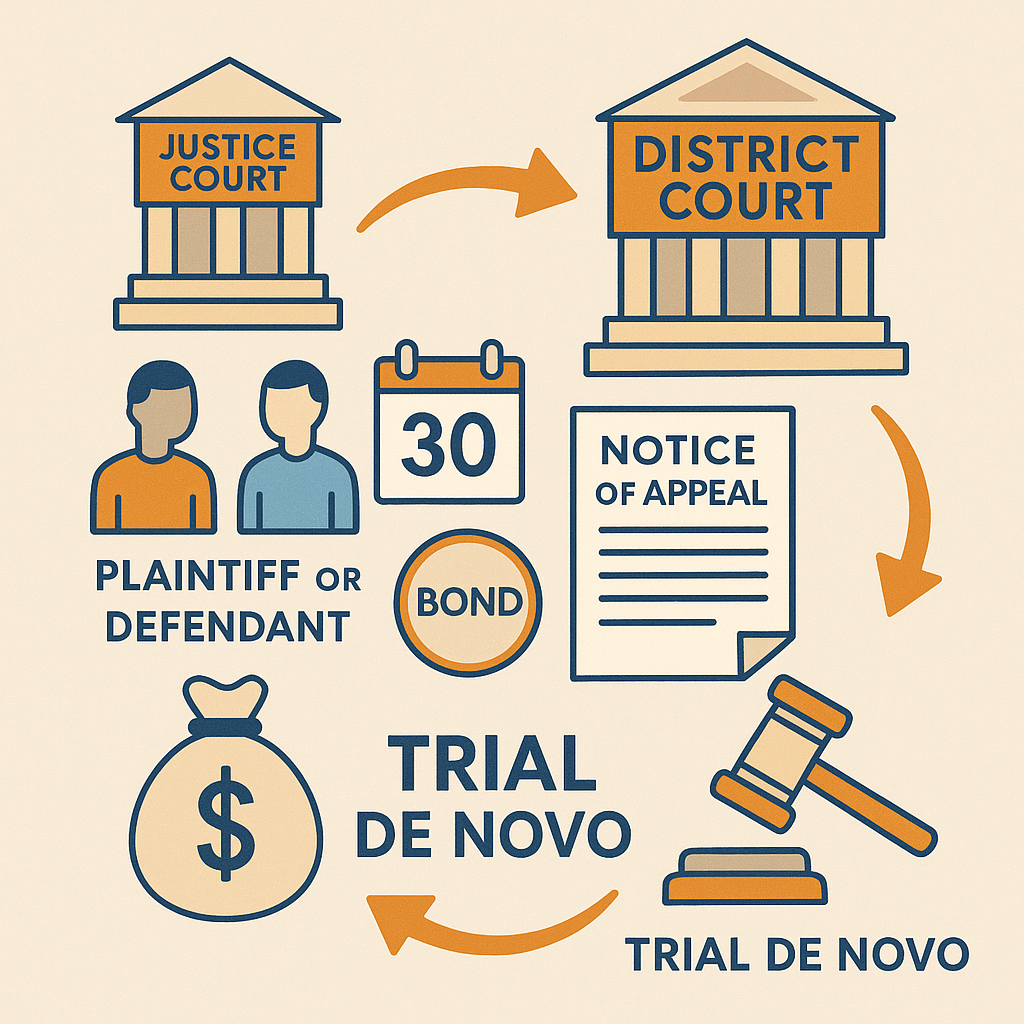How do I appeal a Utah small claims case to District Court?
Most appeals are trial de novo. Here is how deadlines, fees, forms, and hearings work in District Court.
Most Utah small claims appeals are trial de novo, which means a brand new hearing in District Court. This guide explains who can appeal, the 30 day deadline, the filing fee and bond, and how to prepare your evidence and witnesses for the new trial.
Who can appeal and when
Either party the plaintiff or the defendant may appeal a final small claims judgment. The timeline is tight. You typically have 30 days from the date of judgment to file a Notice of Appeal. If you miss the deadline, you usually lose the right to appeal.
Appeals are taken from Justice Court to District Court in the same county. You can only appeal after a final decision. If motions are still pending, wait for a final judgment.
Filing the Notice of Appeal, fees, and bond
File a Notice of Appeal with the Justice Court that issued the decision. You must also pay the District Court filing fee (about $225, amounts can vary) and post a supersedeas bond to secure the judgment while the appeal is pending.
After required payments, the Justice Court forwards the case record to District Court. The District Court will assign a new case number and set the hearing date.
What “trial de novo” means
A trial de novo is a new trial. The District Court does not review the old decision for errors. Both sides present evidence and witness testimony as if the first trial never happened.
You may represent yourself, but rules of procedure and evidence are stricter in District Court than in small claims. If you self represent, review the Utah Rules before your hearing.
Organizing exhibits and witnesses
Bring every document you want considered. Re assemble receipts, photos, contracts, and any other exhibits. If witness testimony matters, arrange for those witnesses to appear again.
The judge will not rely on what was said or filed in Justice Court. Plan a clear timeline, label exhibits, and practice a short opening that frames your story.
Settlement options on appeal
You can settle at any time. If you reach terms, file a written settlement with the court. Settling can save time and costs compared to a full retrial. Judges often encourage good faith settlement talks.
After the appeal: collection and enforcement
When the District Court enters judgment, that decision controls. If you win, you may use normal collection tools such as wage garnishment or liens. If you lose, the other party may enforce the judgment against you. In most small claims matters, there is no further appeal beyond District Court.
Video & Social Learning Hub
YouTube: Small Claims Appeals
Instagram: Utah Appeal Insights
Need Help Planning Your Appeal?
Appealing a Utah small claims case is fast paced and rule heavy. If you want a quick review of your facts, deadlines, and filing steps, talk with a Utah attorney.
Talk to a Utah AttorneyFor more plain English legal guidance, stay updated with Utah Law Explained, explore our mission on the About Us page, or connect with trusted counsel like Gibb Law Firm.
